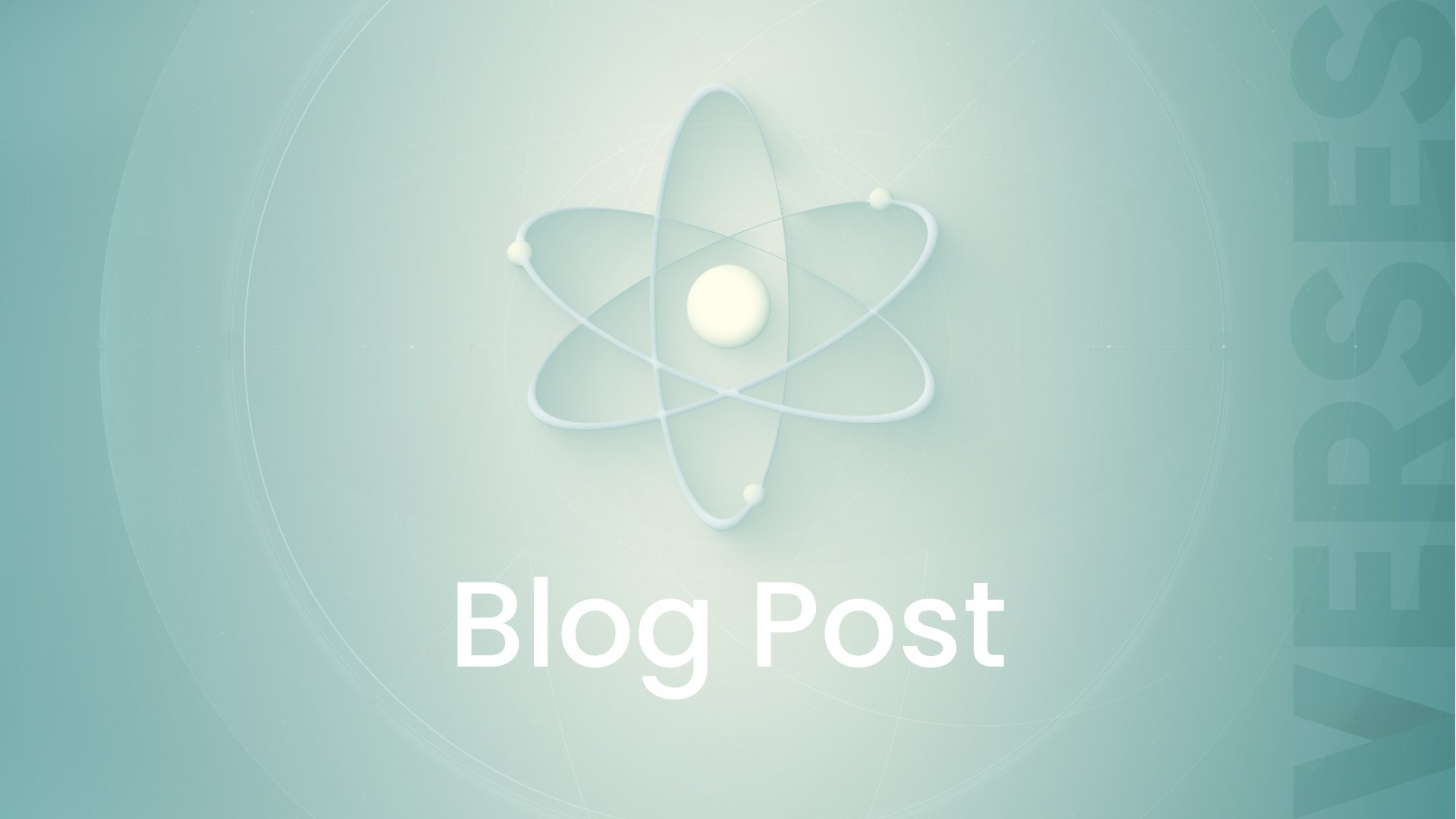4 min read
The Future of Global AI Governance Webinar Series, “A New Pathway for Policymakers”
 VERSES
:
Oct 19, 2023 6:00:00 AM
VERSES
:
Oct 19, 2023 6:00:00 AM

During a time when governments are facing a pressing necessity to address the ethical, legal and regulatory challenges around artificial intelligence (AI) The Future of Global AI Governance Webinar Series presents “A New Pathway for Policymakers.”
The Future of Global AI Governance outlines a visionary framework for AI governance, responding to calls for comprehensive global AI regulation. It offers a first-of-its-kind perspective that combines the legal expertise of the world’s largest law firm, Dentons, the AI acumen of VERSES and guidance on socio-technical standards from the Spatial Web Foundation. This work can harness the full potential of AI while mitigating its risks, establishing explainability, compliance and interoperability by design in the algorithms and their distributed network.
During Part 1 of The Future of Global AI Governance webinar series, Gabriel René, Founder and CEO of VERSES; Philippe Sayegh, Chief Adoption Officer at VERSES; George Percivall, Engineering Fellow with the Spatial Web Foundation; Peter Stockburger, Partner at Dentons Venture Technology and Emerging Growth Group and Eric Tanenblatt, the mediator,, presented several key insights that focus on a new approach for building a safer, smarter and more inclusive AI ecosystem.
A New Path to Global AI Governance: Governing the Algorithm
Current approaches to AI regulation have struggled to keep pace with exponential advancements in the field. Government-led approaches are often reactive and risk stifling innovation. Market-driven solutions also carry risks and risk an unhealthy concentration of power. But there is another path, a novel framework that leverages socio-technical standards and harnesses the evolving capabilities of AI.
“We're looking at this through a lens where legislation is made by humans for humans … and now we're finding ourselves in a situation where we need legislation that's going to manage the relationship between humans and machines – and later between machines and other machines,” Sayegh expressed.
Spatial Web Standards and The Foundation of AI Governance
At the heart of this innovative AI global governance framework are the Spatial Web Standards developed with the Institute of Electrical and Electronics Engineers (IEEE), the world's largest technical professional organization dedicated to advancing technology for the benefit of humanity. The socio-technical standards introduce a Hyper Spatial Modeling Language (HSML) and the Hyper Spatial Transaction Protocol (HSTP). These standards provide a common language that enables AI systems to comprehend the world as humans perceive nature. It also provides the ability to understand laws, regulations and policies explicitly. Spatial Web Standards facilitate real-time compliance of autonomous intelligent systems by translating legal texts directly into machine-readable code.
AI systems that adhere to a common language and a shared set of rules and policies can minimize conflicts and maximize safety. By adhering to the Spatial Web Standards, AI systems developed by different manufacturers can seamlessly interact with each other and humans in a way that we can understand. This interoperability ensures a harmonious coexistence of diverse AI technologies and people.
“When electricity was first discovered, it was very dangerous. It was being used in different ways where people were fearful until there were international grounding standards,” said Stockburger. “Upon those baseline standards, societies and different cultures were able to build their own protocols that operate in today’s world.”
“That has always stuck with me from a policy perspective: it’s the building block upon which future regulation can be built,” Stockburger said.
The Autonomous Intelligent System (AIS) International Ratings System (AIRS) for Classifying AI Intelligence and Autonomy
As artificial intelligence advances, there will be a demand for it to operate autonomously on our behalf. When AI replaces software that runs Cyber-Physical Systems, AI will be able to work autonomously in the real world, resulting in Autonomous Intelligent Systems (AIS). We must understand how much autonomy to grant these systems.
Governing AI is also about putting the right guardrails on activities of Autonomous Intelligent Systems going forward. Added to this part of the discussion was AIRS — a novel ranking system that categorizes AI systems based on their level of intelligence and autonomy. AIRS offers valuable guidance to policymakers in determining the appropriate types of governance frameworks to apply to an AI system. Intelligence levels range from narrow to super-intelligence, while governance frameworks span from centralized to distributed.
“The spatial web essentially defines a geography of these autonomous agents, and so with those structures in particular, we're able to show the world how to enable this ecosystem where AIs, like ChatGPT, are able to do things that we think they should be doing,” said Percivall. “So that’s the direction that we need to go based on that.”
Flying Forward, A Real-World Application
The Flying Forward project, a collaborative three-year research and innovation project funded by the European Union demonstrated how the Spatial Web Standards empowered self-governing drones to navigate complex missions while adhering to regional laws and policies. HSML and the HSTP enabled the drones to interpret and abide by laws in real-time, ensuring safe and efficient operations.
The Significance of Socio-technical Standards
It's essential to recognize that global AI governance is not solely a technical challenge but also a social one. The Spatial Web Foundation is working with the IEEE to develop these open socio-technical standards.
The proposed framework aims to be a distributed public utility available to everyone. It challenges the notion that a single corporation can monopolize AI governance, emphasizing inclusivity and transparency. The Spatial Web Standards have been recognized as a public imperative by the IEEE and are available for anyone.
As Autonomous Intelligent Systems become increasingly integrated into our society, the potential impact on humanity cannot be underestimated. To ensure that we capture the promise of AI and avoid its perils, comprehensive socio-technical standards that ensure fairness, accountability and ethical considerations must be woven into the fabric of the AI network. Socio-technical standards enable AIs to be part of a network. On this network, they share knowledge and work collectively to solve problems of any scale. These AIs must be compliant to operate on the network. HSTP is a permissions-based transfer protocol. Moreover, it demonstrates compliance by design.
“These are the tools that we have at our disposal,” said René. “We want them to be smarter but they have to be safer. We cannot make the same mistakes we made in Web 2.0 where we’re chasing the dragon after the fact.”
“And that’s why, with a little bit of foresight and a lot of care, we put this work into the public space so that this can be a distributed public utility that we can all use together to basically make a smarter world,” René continued.
Conclusion
The journey toward effective AI governance necessitates collaboration among policymakers, technologists, legal experts and the public. “The Future of Global AI Governance” presents a visionary roadmap for constructing a safer, smarter and more inclusive AI ecosystem. By establishing explainability, compliance and interoperability by design in the algorithms and their distributed network, we can harness the full potential of AI while mitigating its risks.
As AI's evolution accelerates, the imperative for proactive governance becomes increasingly evident. Embracing innovative frameworks like the Spatial Web Standards empowers us to shape a future where AI understands our world and operates safely within the bounds of our collective values and principles. By adopting visionary governance frameworks like the Spatial Web Standards, we can steer the transformative power of AI toward a safer and smarter future for all.
“Now is the time to emphasize these socio-technical standards that get the values and norms of what we share collectively into these products and make this technology very worthy of our use in our society,” said Percivall.
For more information on AI Governance or to watch Part I of The Future of Global AI Governance Webinar Series, visit https://www.verses.ai/blog/tag/ai-governance

